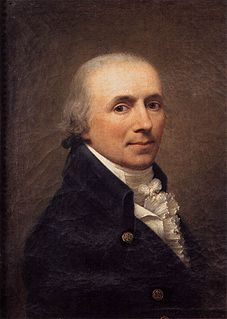Related Research Articles

Giulio Alberoni was an Italian cardinal and statesman in the service of Philip V of Spain. He is known also for being a remarkable soldier and great gourmet who advised the Spanish court on table manners and menus.

Piacenza is a city and comune in the Emilia-Romagna region of northern Italy, the capital of the eponymous province. The etymology is long-standing, tracing an origin from the Latin verb placēre, "to please." In French, and occasionally in English, it is called Plaisance. The name means a "pleasant abode", or as James Boswell reported some of the etymologists of his time to have translated it, "comely". This was a name "of good omen."

Giovanni Lanfranco was an Italian painter of the Baroque period.

Alessandro Tiarini was an Italian Baroque painter of the Bolognese School.

Marcantonio Franceschini was an Italian painter of the Baroque period, active mostly in his native Bologna. He was the father and teacher of Giacomo Franceschini.

Sebastiano Ricci was an Italian painter of the late Baroque school of Venice. About the same age as Piazzetta, and an elder contemporary of Tiepolo, he represents a late version of the vigorous and luminous Cortonesque style of grand manner fresco painting.

Camillo Procaccini was an Italian painter. He has been posthumously referred to as the Vasari of Lombardy, for his prolific Mannerist fresco decoration.

Giacomo Boni was an Italian painter of the late-Baroque period, active mainly in Genoa.

Giovanni Battista Trotti was an Italian painter of the late-Renaissance period, active mainly in Piacenza, Parma, and his native city of Cremona.

Giuseppe Peroni was an Italian painter of the Baroque period.

Tommaso Aldrovandini was an Italian painter of the Baroque period. He mainly painted perspective views and architectural subjects (quadratura), in which the figures were painted by Marcantonio Franceschini and Carlo Cignani. He decorated churches, palaces, and theaters in Forlì, Verona, Venice, Parma, Turin, Ferrara, and Genoa, and especially in his native Bologna. Among his pupils was Giovanni Benedetto Paolazzi.

Gaspare Landi was an Italian painter of the Neoclassic period, active in Rome and his native city of Piacenza.

Michele di Matteo, also sometimes used with further qualifications of da Bologna or Lambertini was an Italian painter of the late Gothic period in Bologna.
Ercole Lelli was an Italian painter of the late-Baroque, active mainly in Northern Italy, including his native city of Bologna, as well as Padua and Piacenza.

Carlo Antonio Rambaldi (1680-1717) was an Italian painter of the Baroque period, active in his native Bologna.
Giovanni Battista Magnani was an Italian architect working entirely in Parma in the first half of the 17th century. He was the most successful of a family of masons and architects that included his father Nicostrato and his son Carlo.

Lorenzo Tancini or Toncini was an Italian painter.

Luigi Serra was an Italian painter, known for his watercolors.
Antonio Peracchi was an Italian painter, active in the Neoclassic style.
The following is a timeline of the history of the city of Piacenza in the Emilia-Romagna region of Italy.
References
- ↑ Parabola di Lazzaro e del ricco epulone from the Gospel of St Luke.
- ↑ Gli artisti piacentini, cronaca ragionata, by Luigi Ambiveri, Tipografia Francesco Solari, Piacenza, 1879. pages 157-160.